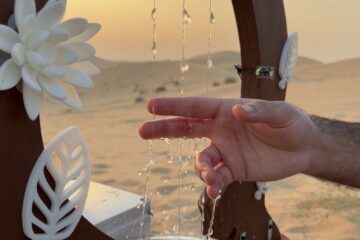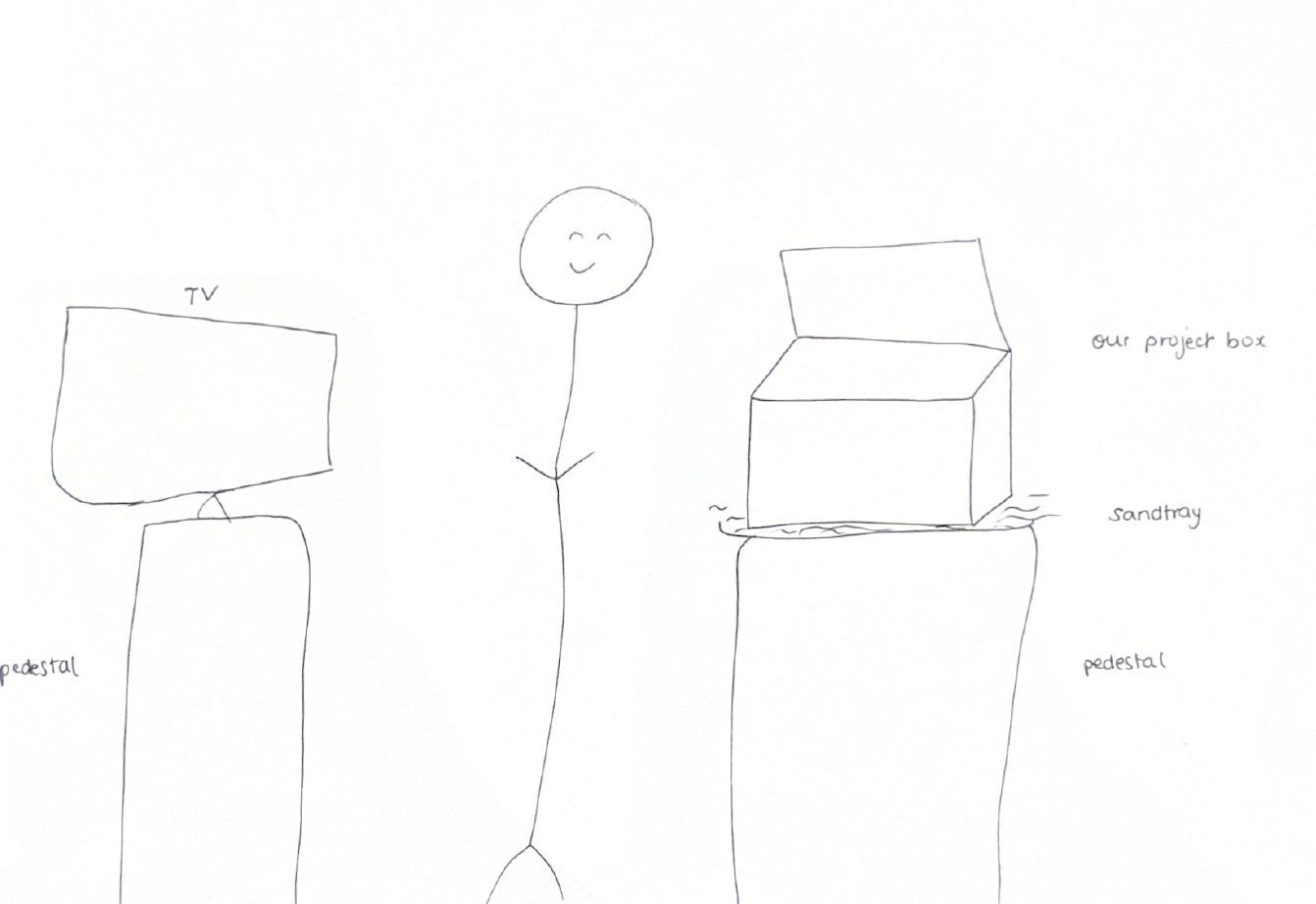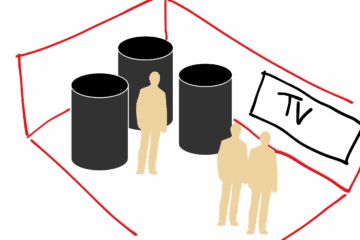1. Overview
The Lyre of Thirst is an interactive art installation that transforms the desert’s profound relationship with water into a multisensory experience of sound, light, and touch. Inspired by the ancient lyre, a symbol of spiritual reflection and poetic longing, this installation reimagines its strings as flowing water streams that respond to human interaction. The public can “play” the piece by touching or interrupting the water flow, producing musical notes..
At its core, our art evokes the feeling that water is rising from the earth itself, a rare and blessed moment in the desert. In such places, water is not just a resource but a voice that tells stories of survival and renewal. Every drop carries the memory of life returning to the land. Through this work, we aim to make ancient symbolism meet modern interaction design, inviting the audience to listen to how water speaks, reacts, and resonates when touched. Each sound becomes a reminder that in the desert, finding water is finding life, and listening to it is understanding the fragile harmony that connects us to the earth.
2. Concept
For centuries, desert travelers and Bedouins followed the subtle rhythms of dunes and winds in search of water and refuge. Each oasis was a physical resource, and also a song of survival and harmony with the land. This project reimagines that ancient relationship by turning water into a voice that carries both memory and fragility.
It is also inspired by the biblical story of King David playing his lyre in the wilderness, where sound and silence blended in moments of spiritual introspection and longing. As he wrote in Psalm 63:1: “My soul thirsts for you, my flesh longs for you, in a dry and weary land where there is no water.” Here, the lyre, once a companion of solitude in the desert, becomes a symbol of inner thirst and reflection and a reminder that the search for water mirrors the search for meaning and life. In this landscape of scarcity, The Lyre of Thirst transforms the desert into a space of reverence, where resilience begins with listening to the echoes of what keeps us alive.
3. Inspiration
Our project is inspired by two instruments: the Paraguayan water harp and the ancient lyre.
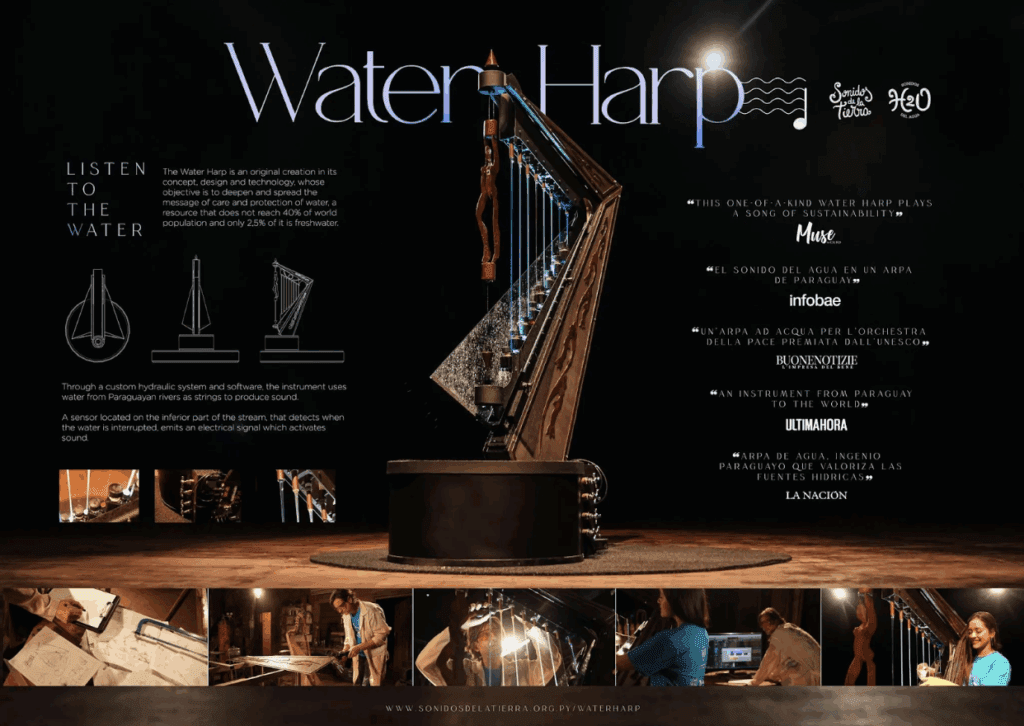
The Paraguayan water harp was developed by the artist Fernando Ambere Feliciángeli within the Program #SomosH2O, a community-based musical initiative led by Luis Szarán. This instrument uses flowing water to modulate sound, producing tones that shift according to the movement and depth of the water. Created to raise environmental awareness and promote a deeper connection with nature, the water harp blends music, ecology, and social engagement. Its harmony between natural elements and human creativity is what resonates the most with our project’s goal of connecting technology with both ecological and spiritual consciousness.
The lyre, on the other hand, is one of the oldest string instruments known to humankind, originating in ancient Mesopotamia and spreading through Egypt and Greece. It was often associated with poetry, ritual, and the wilderness. The biblical figure King David famously used the lyre to accompany his psalms in the desert, using music as a way to commune with both God and nature. This connection between the lyre and the desert inspires The Lyre of Thirst, which positions sound as a form of reflection and survival in an arid landscape.
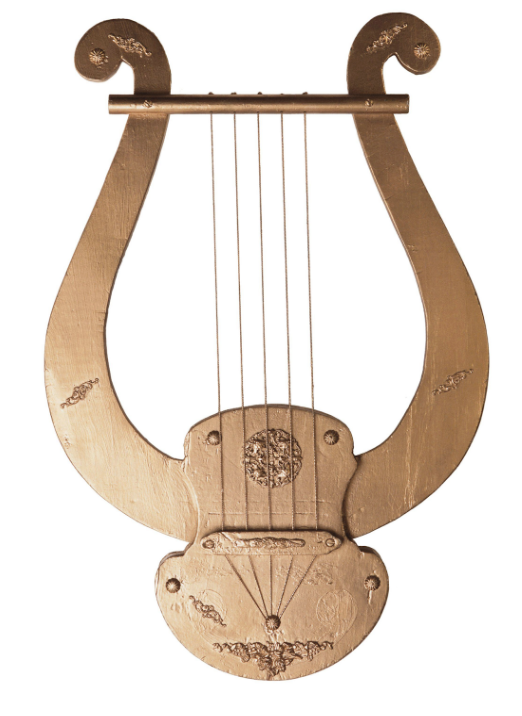
So, by bringing these two instruments together, our project connects the natural rhythm of water with the spiritual depth of sound. Both the water harp and the lyre reveal how music can express our dependence on nature and our search for meaning, turning the act of playing and listening into a moment of reflection.
4. Visual Representation
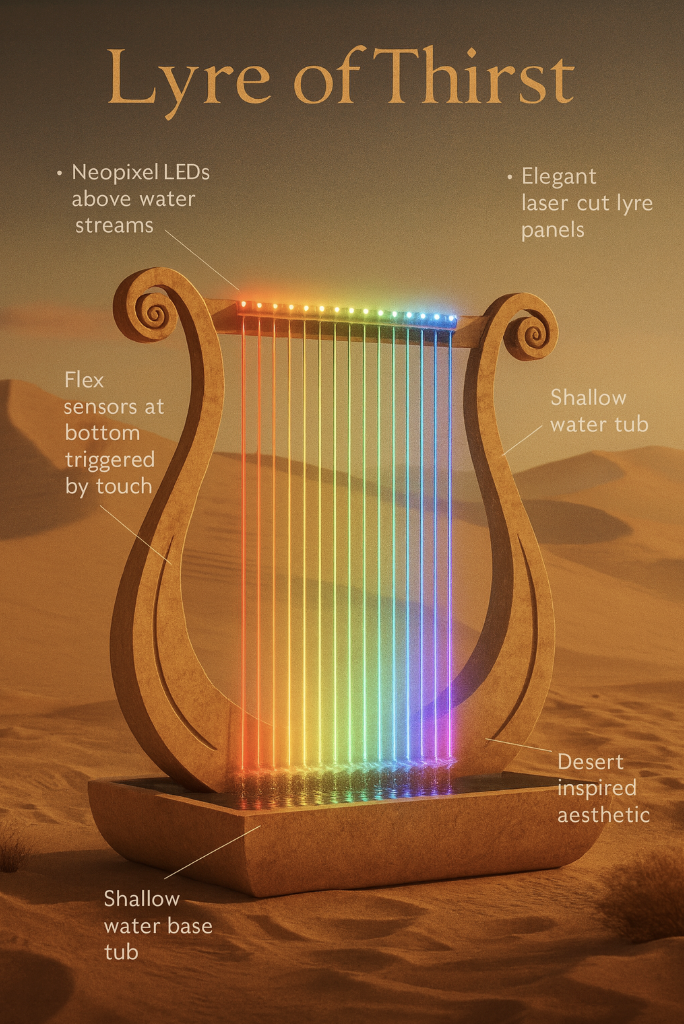
5. Planned Technical Implementation
- Structure & Water System
- A 3D printed shallow tub forms the base of the installation. Inside, a submerged water pump circulates water upward through concealed tubing. This creates the effect that water is naturally emerging from the ground, aligning with the desert-oasis metaphor.
- Two laser-cut lyre-shaped wooden panels will be fixed on opposite sides of the tub. A set of PVC pipes will be mounted across the top, with evenly spaced holes that allow water to fall in straight, lyre-string-like lines back into the tub.
- Hidden Wiring & Protection
- All electronics (pump, sensors, Feather board, wiring) will be housed below the tub in a sealed and covered compartment, ensuring protection from water and maintaining a clean aesthetic.
- Interactivity
- Flex sensors will be placed at the base of each water stream. When a user touches or interrupts a stream, the sensor sends a signal to the Adafruit Feather RP2040 microcontroller running CircuitPython.
- Each interaction triggers a unique musical note, allowing users to compose spontaneous melodies with water.
- Lighting
- A strip of Adafruit NeoPixel Strip LEDs will be mounted above the PVC pipe, illuminating each water stream in a distinct color.
6. Conclusion
The Lyre of Thirst is a technological sculpture and a spiritual reflection. Through the act of touching water to create sound, we seek to transform a moment of listening into an act of awareness. By combining the sacred imagery of the lyre with the elemental power of water, this project invites audiences to reflect on the interconnectedness between nature, spirit, and survival. In a world facing the growing challenge of water scarcity, this piece becomes a poetic reminder that every drop, like every sound, carries the memory of life itself.
Link to our Presentation: https://www.canva.com/design/DAG29H9gd_U/P_tGUDMq_DcSsyz1n5F8ow/edit
